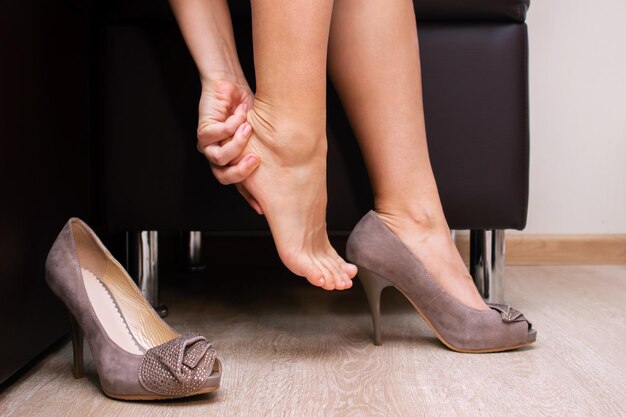Heel spurs are bony growths that form on the underside of the heel bone (calcaneus). They are often associated with plantar fasciitis, a condition characterized by inflammation of the plantar fascia, the thick band of tissue that runs along the bottom of the foot. While heel spurs themselves may not always cause pain, they can lead to significant discomfort and complications if left untreated. This article will explore the symptoms, causes, and treatment options for heel spurs.
Symptoms of Heel Spurs
The symptoms of heel spurs can vary in intensity and may include:
- Pain in the Heel
The most common symptom is pain in the heel, especially during the first steps in the morning or after sitting for long periods. The pain is usually sharp and may subside with movement but can return after prolonged activity. - Tenderness
The heel area may be tender to the touch, and pressure on the spur can cause discomfort. - Swelling and Inflammation
Inflammation around the heel spur can lead to swelling and increased sensitivity in the surrounding tissue. - Stiffness
Some individuals may experience stiffness in the heel, making it difficult to walk or engage in physical activities. - Difficulty Walking
As the pain intensifies, individuals may alter their gait to avoid pressure on the heel, leading to further discomfort and potential strain on other areas of the foot and leg.
Causes of Heel Spurs
Heel spurs develop as a result of repeated stress and strain on the heel bone. Common causes include:
- Plantar Fasciitis
This condition is the leading cause of heel spurs. Inflammation of the plantar fascia due to overuse or injury can lead to the formation of bone spurs. - Excessive Foot Pronation
Individuals with flat feet or high arches may experience excessive foot pronation, causing strain on the heel and leading to spur formation. - High-Impact Activities
Activities that involve repetitive impact on the feet, such as running, jogging, or sports, can contribute to the development of heel spurs. - Age
As people age, the fat pad on the heel thins, leading to increased pressure on the heel bone, which can promote spur formation. - Obesity
Carrying excess weight places additional stress on the feet and can contribute to heel spur development. - Inappropriate Footwear
Wearing shoes that lack proper support or cushioning can increase the risk of developing heel spurs.
Treatments for Heel Spurs
Treatment options for heel spurs focus on relieving pain, reducing inflammation, and addressing the underlying causes. Common treatments include:
- Rest and Ice
Taking a break from high-impact activities and applying ice to the heel can help reduce pain and inflammation. - Footwear Modifications
Wearing supportive shoes with cushioning and arch support can alleviate pressure on the heel. Custom orthotics may also be beneficial. - Physical Therapy
A physical therapist can design a personalized exercise program to stretch and strengthen the muscles in the feet and lower legs, helping to relieve tension on the plantar fascia. - Nonsteroidal Anti-Inflammatory Drugs (NSAIDs)
Over-the-counter pain relievers, such as ibuprofen or naproxen, can help manage pain and reduce inflammation. - Corticosteroid Injections
In cases of severe pain, corticosteroid injections may be administered to reduce inflammation and provide temporary relief. - Surgery
If conservative treatments fail to provide relief after several months, surgical options may be considered to remove the spur or release the plantar fascia.
Heel spurs can cause significant discomfort, particularly when associated with conditions like plantar fasciitis. Early intervention and appropriate treatment can help alleviate symptoms and prevent complications. If you experience persistent heel pain, it’s essential to consult a healthcare professional for a proper diagnosis and treatment plan tailored to your needs. With the right approach, individuals can effectively manage heel spurs and return to their daily activities pain-free.










